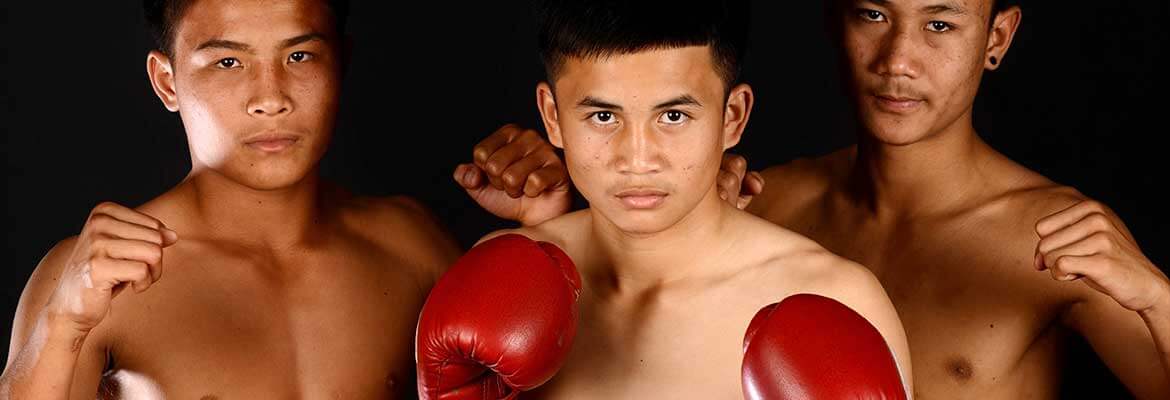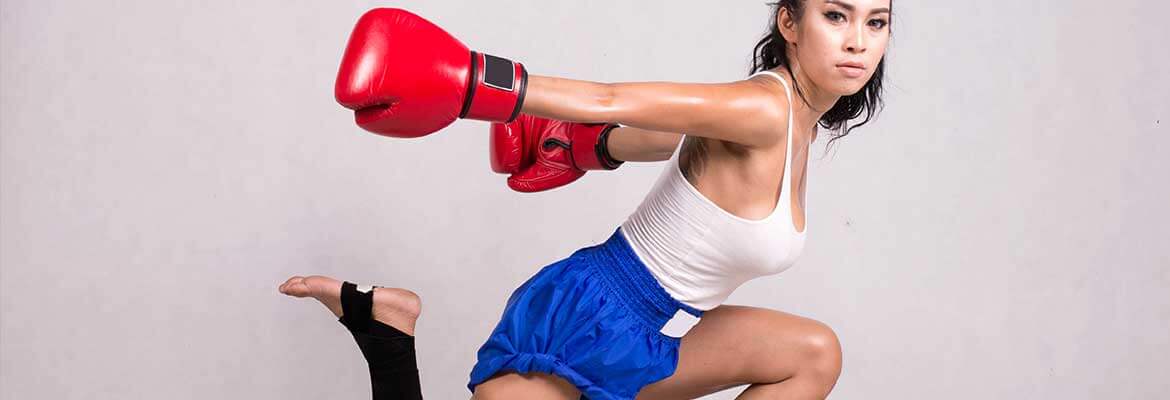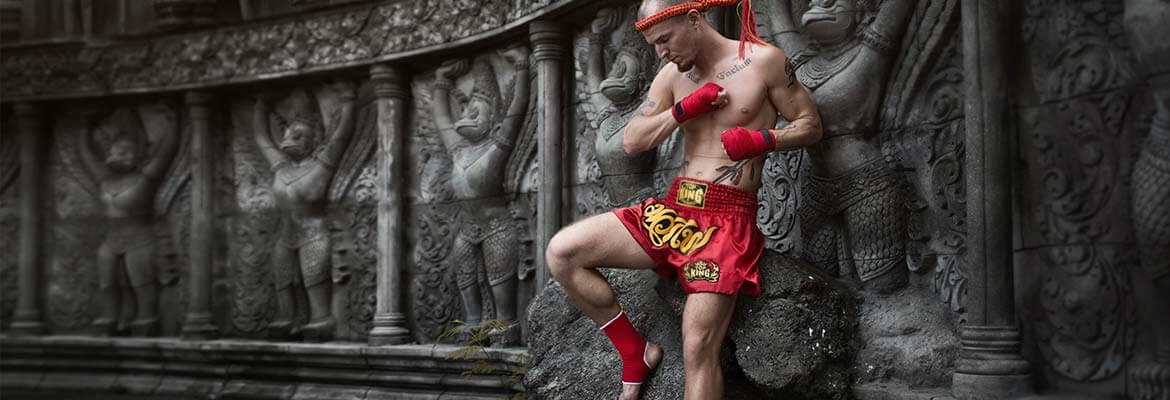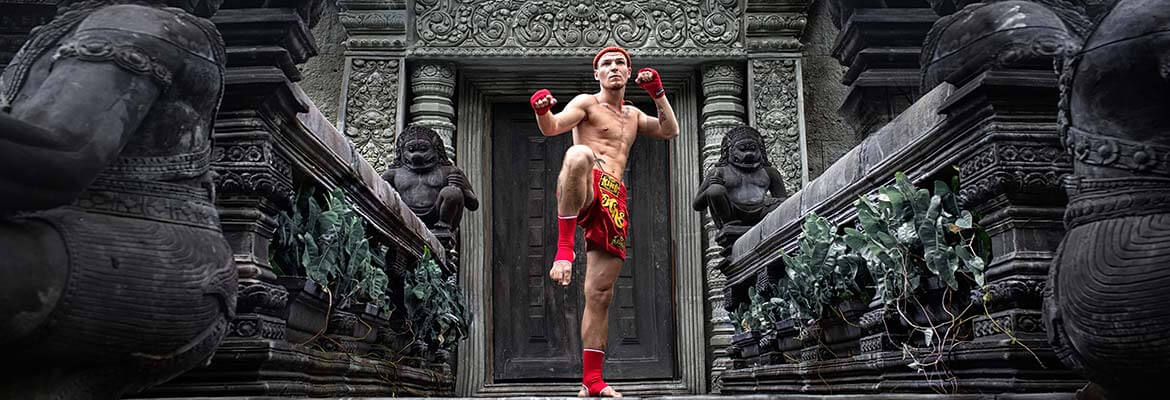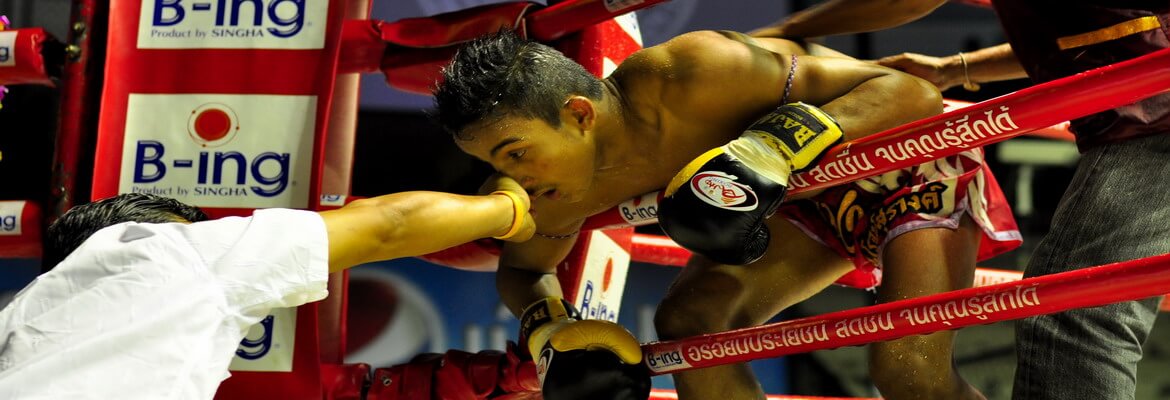Muay Thai
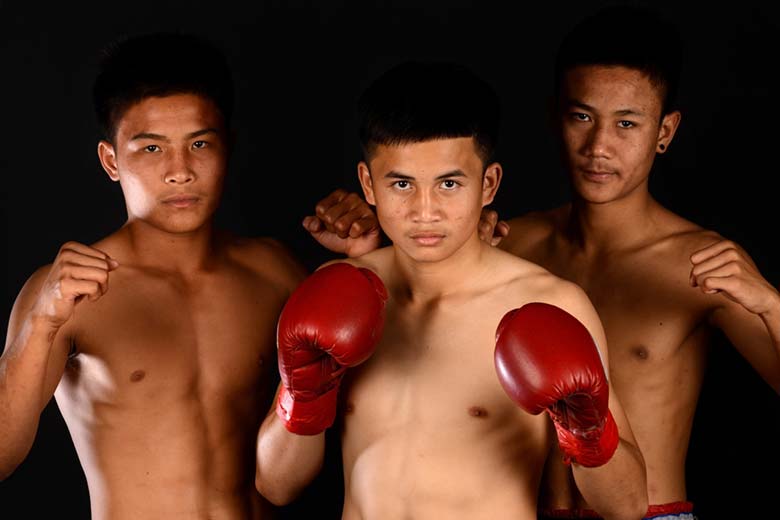
Muay Thai also knows as Thai Boxing is a combat sport, which has its origins in Mae Mai Muay Thai aka Muay Boran, an ancient Thai fighting technique. This technique was taught to ancient Thai warriors, useful if they had lost their weapons during the battle. Today the Muay Thai is the national sport and cultural martial art of Thailand. Muay Thai has its origins during Siam’s Kingdom and, like many other martial arts, the beginning of its course has been lost during the history, encroaching into legend. Still today its exact origins are debated by modern scholars, due much of the Muay Thai history was lost when the Burmese ransacked Ayutthaya, Siamese capital during the 14th century. Almost all the buildings, monuments and libraries were burned, as a result the knowledge on first Siam Kingdom are based on few manuscripts saved from destruction, a few fragmentary information that does not fully clarify the culture and Thai arts. The origins of Thai people are unclear and subject of much discussion.
Some scholars believed that they were a population with origins in southern Mongolia, who they were forced to migrate south east from the Chinese empire expansion. More recent evidence shows that people known like Austro-Thai, were among the first to develop agriculture and advanced civilization prior to north and then southern China, in a constantly migrating under pressure from Chinese. The first reliable source that speaks about their presence in the Thailand territories is an inscription of the twelfth century a.C., this is found in a temple in Angor Wat, referring to Siam people, it indicates them like Khmer Empire vassals. As the origin of dispute Siamese people equally controversial is the origin of Muay Thai. There are at least two versions, the first says that the AO-Lai people, which probably originated the Siamese people, developed the Muay Thai because he was forced to defend itself from the continuous attacks of robbers and chinese people in the territories that they crossed during their migratory period. The second says that the Ao-Lai people developed the Muay Thai art to defend against neighbouring people invasions once settled in the Chao Phraya valley.
The history of this period, or popular legend according to opinions, tells about Nai Khanom Thom heroic feat. Him was a Siamese warrior, or perhaps a Prince, who was deported as a slave, like many other warriors, when the Burmese in 1767 destroyed Ayutthaya. Once back in his territories Hsinbyushin, the Burmese king, organized a lot of tournaments to celebrate his victory. In some of these fights the best Burmese warriors fought against the Siamese, like the gladiators of ancient Rome. During one of these battles the king was fascinated by Nai Khanom Tom. His fighting style was more complete than the Parma practiced by the Burmese fighters, a martial art whose favourite arms shots. The King gave him an opportunity to fight for his freedom, in a combat against the top ten Burmese warriors; different legend version speaks about twenty seven. In combat Nai Khanom Tom defeated all ten opponents with powerful blows, fast and precise. The king amazed paid tribute, giving the promise freedom to him and other prisoners captured in Ayutthaya. Since this event grows up one of the most famous Thai legend. Nai Khanom Thom is considered a representation of the spirit of Muay Thai, as well as a hero. A man who never gives up, ready to sacrifice his own interest and life, putting first the honour, his love for the country and religion. Even today, on March 17 is the date that it is celebrated the holiday that commemorates the Nai Khanom Tom's deeds. Muay Thai began to be practiced like a sport in peace time by Siamese people, when citizens organized demonstrations and meeting to celebrate. The real sport connotation was given during the King Rama VI reign, when he commanded to his general Prai Nontisen Suretara Pahdi to build a stadium in Suan Kulab.
Muay Thai is referred to as the "Art of Eight Limbs" or the "Science of Eight Limbs", because during the combat the fighter can use punches, kicks, elbows and knee strikes, thus using eight points of contact, as opposed to two points in boxing and four points used in kickboxing and savate. A practitioner of Muay Thai is known as a Nak Muay. Western practitioners are usually called Nak Muay Farang, meaning foreign boxer. This discipline is one of the most toughest combat sports. In Thailand it is the national sport. Everyone knows and practice it since very young. Sport teaches to young psychophysical balance, builds character, giving safety of themselves. Muay Thai gives also the opportunity to earn money. Fights are organized every where, and have much followers thought out the country. The part before the fight is maybe the most important to the athlete. The whole ritual serves to the fighter for find his concentration, tranquillity and the benign spirit favour to ensure that the fight has good outcome. The entrance to the ring, called Kuen Suu Weitee, is the time when the athlete prepares himself to meeting from psychological standpoint. This is a meditation stage, prayer and incantations, with gestures often superstitious, like how to climb stairs or walk across the ring ropes. This serves to install confidence in athletes and helps to clear your mind to unnecessary thinking before addressing the meeting.
The Ram Muay is the ritual dance that it is performed before the fight. It is performed with slow and symbolic movements accompanied by music, named Muay Dontree. The music accompanies the fight during all the meeting, in a intensity growing up when the meeting is more gory. The Ram Muay, ritual dance, is used to obtain the benign spirits favour and drive away evil spirits from the war field. This ritual dance is not just a religious expression, but also it serves to stretching form to warm up muscles and it prepares the athlete to fight. The Ram Muay is divided into three basis stages: the Wai Khru, the Taa Phom Naang and Phom Si Na. When the athlete finishes his Ram Muay various stages goes to his master to get the Pitee Tod Mongkon, the most important amulet that is placed on the athlete head. The master receives the athlete and with his hands clasped on his face begins a silence prayers and incantations for the success of the fight. When the prayers finish the master pronounces the sentence “from man become a warrior”, then the Mongkon is removed from the pupil head and the master puts it on his angle with the protecting function the student from evil sprits to the during the meeting.
The Pitee Tod Mongkon and all the other amulets have an important function during the combat, not only folk, each it has a specific function. Mongkon is the protective circle fabric that is placed on the head before fight. The Mongkoh is applied to the athlete by his master and only his master can remove it with a rite before the match. Pra Krueng is Buddha sacred image that it was inserted inside the Mongkon. Kruang Ruang is the cloth bracelet, braided rope or any other tissue. It is made by the teacher; the athlete can use it individually or on both arms. Pirod is another cloth bracelet, braided rope or any other tissue, done by the master. It is an alternative at Kruang Ruang, the athlete can use it individually or on both biceps. Dhagrut are small amulets in bronze, or sometimes in silver, depicting sacred symbols, which they are meant to protect the warrior whose wears them, are placed into Kruag Ruang or Pirod. Pitsamorn are made with palm leaf inserted in a natural coating fibre depicting sacred symbols, similar to Dhagrut can stay inside the Kruang Ruang or Pirod. Waahn is an herb that it is associated with a magical ritual it gives to athlete strength and virility, it is kept inside the Mongkon, the Kruang Ruang or Pirod. Suea-Yana is the traditional red shirt, like Phaa-Yan, traditional handkerchief, both are made with various shapes and symbols with mystical energy Chakra depictions blessed by monks. Phuang Malai are flowers garlands, usually orchids, carnations, jasmine and daisies, which they are carried by fighter before his meeting on his bare chest. Whan Nan Chan Kok is a toxic root that it grows the rivers bank, this root was used in the past before a fight to death.
Each year a lot of young Europeans relocate to Thailand for a period of their lives, to learn or improve this harsh martial art. A Campus in Thailand is the best place to learn Muay Thai. In a campus you can train with Thai champions, but you need a strong will and a sacrifice spirit. If you want to improve your Thai boxing techniques and you are willing to train hard for several hours a day; you can go to the one of the many schools in the Kingdom. Muay Thai Campus are everywhere in Bangkok and also in the tourist area. Your choice depends on your desire to sacrifice, if you want focus only to Muay Thai is better to choose a school in Bangkok, if you want even a holiday you can go to Phuket or Samui. It is very important to know that Muay Thai asks a lot of sacrifices physical and also mental, if you want also have fun during the sparkling Thai nights is better than you give up.Show More





